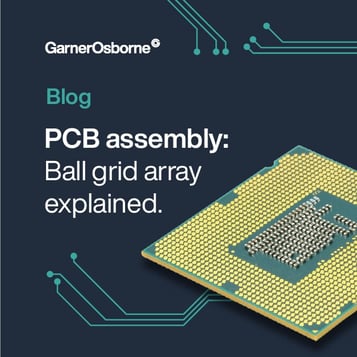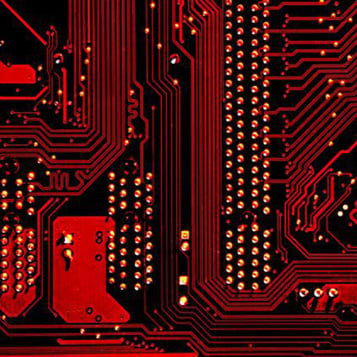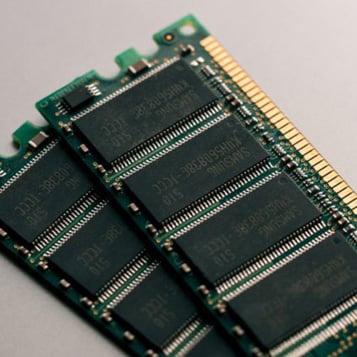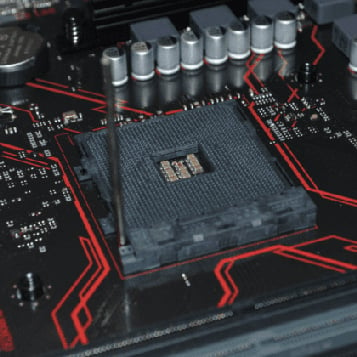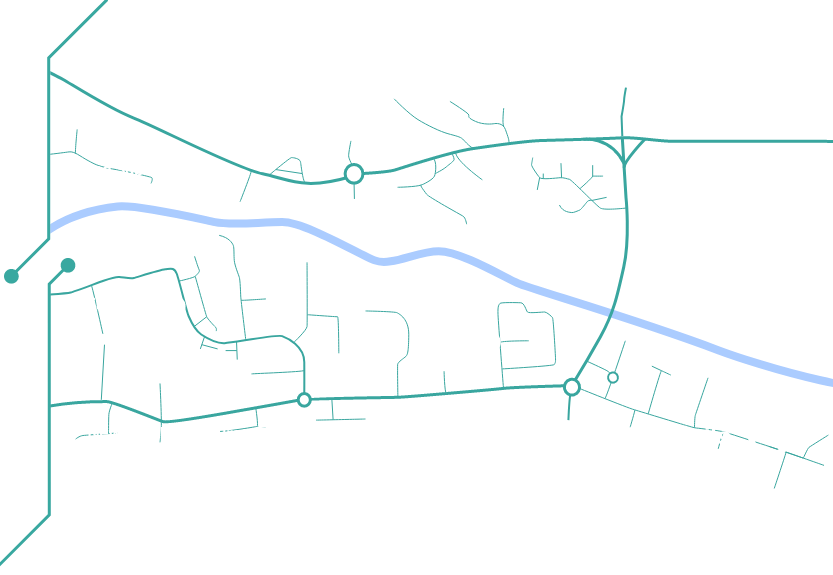What are the different types of PCBs?
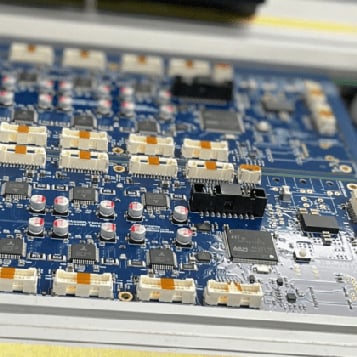
What are the different types of PCBs?
If you thought printed circuit boards – otherwise known as PCBs – were all the same, think again. There are various types of PCBs, each of which has its own manufacturing and assembly processes.
Read on to find out more about the different types of PCBs and their specific benefits, and discover how we can support your PCB manufacturing needs.
What’s on this page
- What are printed circuit boards?
- Single-sided PCBs
- Double-sided PCBs
- Multi-layer PCBs
- Rigid PCBs
- Flexible PCBs
- Rigid-flex PCBs
- PCB manufacturing at Garner Osborne
What are printed circuit boards?
Before we explore the different types of PCBs, let’s recap what we mean by the term ‘printed circuit board’.
Put simply, a printed circuit board (PCB) is a flat rigid structure that connects the various electrical components of a device to make it function. The backbone of modern electronic devices, PCBs can be found in everything from TVs, laptops and mobile phones to medical and aerospace equipment.
PCBs are usually made from a non-substrate material and contain layers of embedded copper circuitry that mechanically and physically support the electrical device. As we explain below, they can include one or several layers, depending on the type of board and the intended application.
Single-sided PCBs
First developed in the 1950s, single-sided PCBs have a simple design that makes them ideal for low-cost electrical devices such as calculators and FM radios. These types of boards contain a single layer of conducting material (typically copper) which sits above the substrate on one side of the board. A solder mask coating and silk screen are also added to help protect the board and increase its lifespan.
As a single-sided PCB only has one conductive layer, the electrical paths can’t overlap or intersect, which means they usually take up more space than other types of circuit boards.
Some of the advantages of single-sided PCBs include:
- Relatively easy to design and manufacture
- Suitable for devices that have a low-density design
- Cheaper than other types of printed circuit boards
- Easy to repair if something breaks.
Double-sided PCBs
In a double-sided PCB, the conductive material and electrical components are attached to both sides of the board rather than just one. Holes are then added to the board to enable the electrical circuit on one side to connect to the other. Components can either be connected using surface-mount technology or more traditional through-hole technology.
Double-sided printed circuit boards are some of the most widely used PCBs today as they allow for more complex circuitry designs and thus more sophisticated products. They too have a substrate, copper layer and protective solder mask, although, unlike single-sided PCBs, the copper layer is added to both sides of the board. As a result, double-sided PCBs are typically more compact than their single-sided counterparts.
Double-sided PCBs can be found in a wide range of electrical products including mobile phones, amplifiers and UPS systems. Some of the advantages of these types of boards are:
- They’re suitable for more complex electronic devices
- They’re more compact than single-sided PCBs
- Relatively inexpensive to produce
- More flexible than single-sided PCB designs
- They allow for denser circuitry.
If you’re looking for an experienced PCB supplier, please get in touch and our team will be happy to talk you through the circuit board process in more detail.
Multi-layer PCBs
Multi-layer PCBs feature several double-sided conductive layers that are joined together in a sandwich-like structure. As a rule of thumb, any board that contains at least three conductive layers is usually classed as a multi-layer PCB.
Unsurprisingly, multi-layer PCBs tend to be more expensive to manufacture. They’re ideal for high-powered or very complex designs and are used in a variety of modern electrical devices such as laptops, tablets, mobile phones, GPS trackers and medical equipment to name a few.
Some of the advantages of multi-layer PCBs include (but are not limited to):
- More robust due to their multiple layers
- Complex electronic circuits can be created in a small area
- More flexibility when it comes to design
- Suitable for high-speed circuits.
We have a wealth of experience in manufacturing high-quality multi-layer PCBs – simply call us on 01635 582626 or request a free quote.
Rigid PCBs
As the name suggests, a rigid printed circuit board is solid and inflexible. It can take various forms including single-sided, double-sided and multi-layered. Crucially, its rigidity means it can’t be changed after it has been manufactured. Despite this, rigid PCBs are still very popular and feature in a variety of electrical devices such as MRI systems and temperature sensors.
Some of the advantages of rigid PCBs are:
- They’re cost-effective to produce
- It’s easy to diagnose and repair faults
- They can absorb vibrations and are relatively quiet
- They’re compact and lightweight.
Flexible PCBs
Flexible printed circuit boards (also known as flex PCBs and flex circuits) contain a flexible plastic substrate. Whereas the electrical components in other types of boards must fit within the size of the circuit, flexible PCBs are far more versatile. The flexible plastic substrate can bend or flex to accommodate the size, shape and movement of the component without damaging the circuit.
Thin and lightweight, flexible printed circuit boards are ideal for small spaces and irregular or contoured shapes. They have a wide range of applications including cameras, LCD fabrication and automotive parts.
So what about the benefits? As you might expect, flex PCBs have many advantages:
- They’re smaller and lighter than rigid PCBs
- Their flexibility allows for a tighter bend and a wider range of designs and applications
- They dissipate heat more easily, enabling them to withstand extreme temperatures better than other types of circuit boards
- They’re compatible with a wider (and cheaper) range of connectors.
If you’re not sure whether a flexible PCB is the right kind of board for your product, our team will be happy to advise you.
Rigid-flex PCBs
As the name implies, rigid-flex PCBs are a hybrid of flexible and rigid circuit boards. They’re typically made up of several flexible circuit inner layers, which are joined together using an epoxy pre-preg bonding film. They require a rigid board, connected either internally or externally via plated through holes to deliver additional support where it’s needed. The flexible sections of the board then enable the circuit board to follow corners and accommodate parts that require more space.
Although they can be more expensive to manufacture, by utilising the advantages of both flexible and rigid technology they can unlock a wealth of new possibilities and enable more mechanically-challenging designs to be created.
Some of the benefits of rigid-flex PCBs are:
- Streamlined design thanks to fewer cables and connectors, as well as more discrete wiring
- More reliable than some other types of printed circuit boards as there are fewer solder joints
- Lightweight and compact
- Resistant to shock and can withstand extreme vibrations
- Simpler PCB assembly process.
PCB manufacturing at Garner Osborne
With over 30 years’ experience in PCB prototyping, manufacturing and assembly, Garner Osborne is one of the most trusted PCB manufacturing companies in the UK.
We can fabricate a wide variety of printed circuit boards for a range of industries and will work with you to determine the most suitable type of PCB for your requirements. So whether you require a single-sided, double-sided or multi-layer PCB, our experts have the knowledge, skills and equipment to bring your product to life.
Plus, thanks to our stringent quality and assurance processes, you can rest assured that your circuit board will be completed to the highest possible standard.
You can read more about our PCB manufacturing capabilities on our website or request your free PCB quote today.
